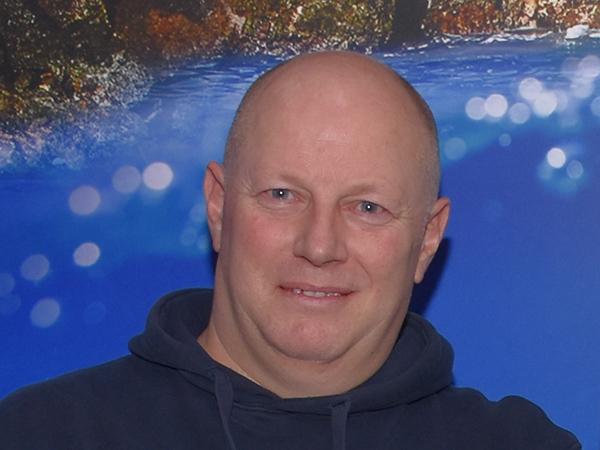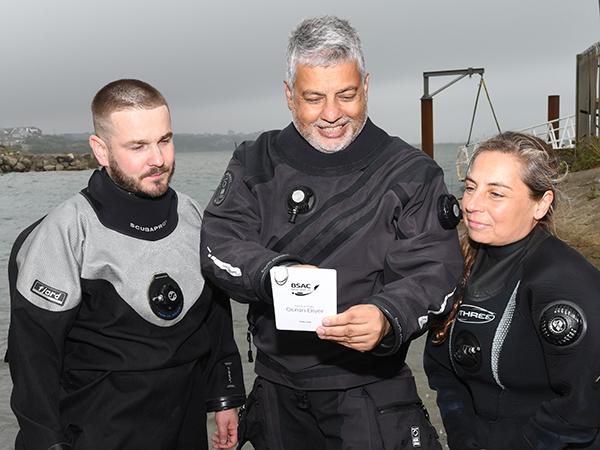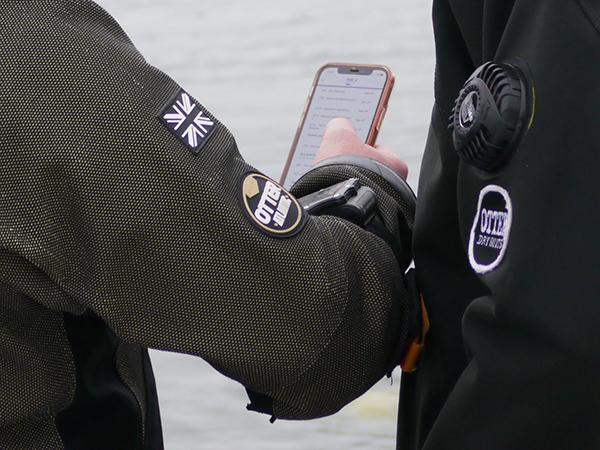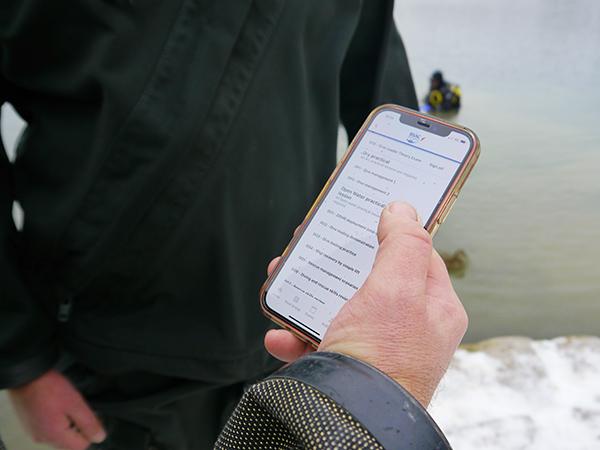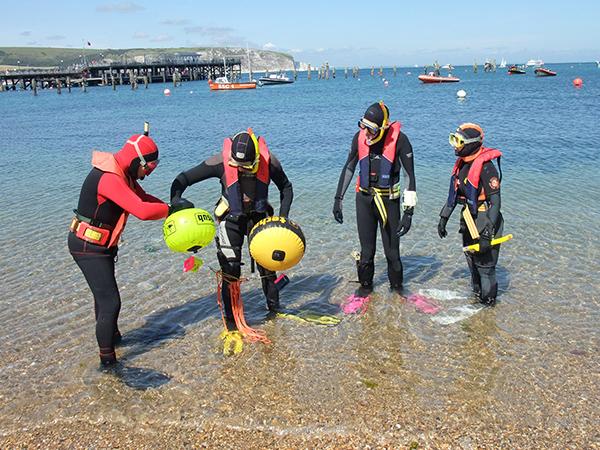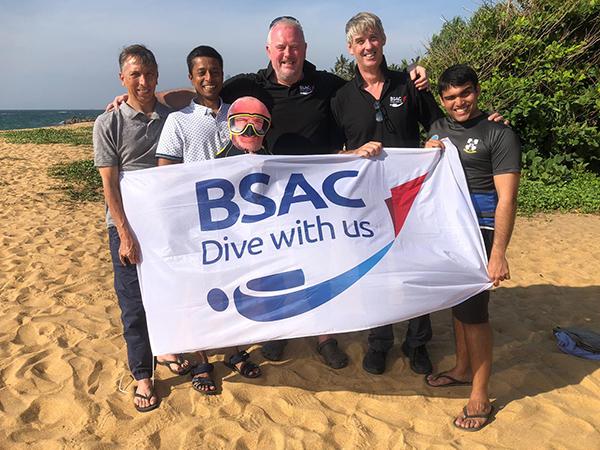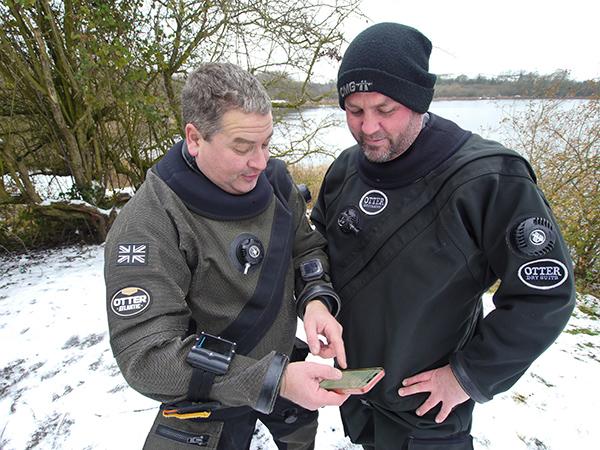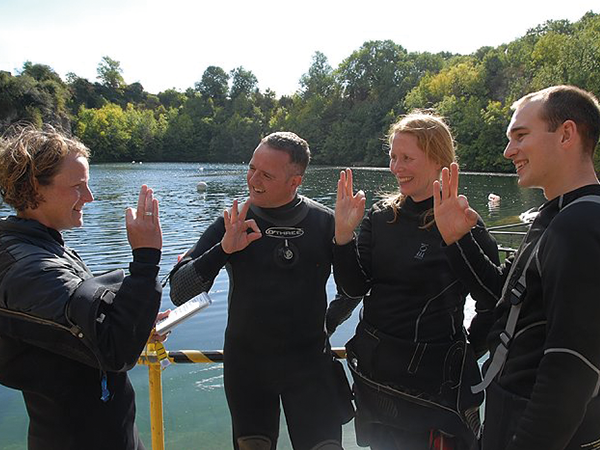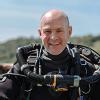If you’re curious to know pass rates, the OWI Chief Examiner has been collating statistics on students’ achievements since 2018
The Open Water Instructor grade requires students to pass four separate elements to complete.
(Pass rates for 2002 - 2017 are at the foot of this page)
- A ten-minute classroom presentation
- A 1 hour 60 question multiple choice answer exam paper
- A 45 minute practical assessment
- A rescue assessment (introduced in October 2018)
OWI Exam Pass rates 2018 onwards
| Year | Classroom pass rate | Theory paper pass rate | Practical O/W pass rate | Rescue Assessment pass rate |
| 2018 | 89% | 94% | 91% | 93% |
| 2019 | 95% | 91% | 88% | 92% |
| 2020 | 91% | 95% | 82% | 94% |
| 2021 | 97% | 93% | 91% | 95% |
From this record (and previous records see table below) and from reading student reports for each component it is clear that there are some fairly obvious factors implicated within each of these components that go some way to explaining why people fail them.
Classroom assessment
The BSAC Theory Exam is marked on the basis of the four Essential Criteria assessed using the mnemonic
PAVE covering:
PROGRESSIVE - Information taught in a logical, progressive manner
- Was essential knowledge recapped?
- Did the points follow on from each other logically?
- Was the new information introduced progressively in small steps?
ACCURATE - Information accurate & up to date
- Was the information presented accurate?
- Was the information presented up to date?
VISUAL - Supported by appropriate visual aids
- Was each piece of information supported by a visual aid?
- Were the visual aids big, simple & colourful?
- Were pictures or diagrams used where possible?
EFFECTIVE - Contained all essential ‘Must Know’ information
- Did the lesson cover the subject in suitable depth?
- Would the lesson have taught the subject?
Most commonly students tend to fall down on two key areas of these criteria:
Effective Teaching
Either by not covering all the relevant ‘Must know’ information by giving too much of an overview of the topic or by expecting too much assumed knowledge on the part of their assumed audience.
Accurate Information
The weaknesses here generally relate to a limitation of the knowledge on the part of the would be instructor. It is very much the luck of the draw which subject you are given for this examination but none of the subjects are taken from outside the diver training syllabus beyond Dive Leader level and so should be within the understanding of any Dive Leader which is the prerequisite for this examination. Overall, however the key factor is in the level of preparation that is dedicated to preparing for this assessment. On the IFC we make the point clearly that the major part of any successful Presentation is in the Planning and Preparation. To this end we have prepared additional advice and Guidance in a separate document for the TIE entitled Theory Instructor Exam Guidance.
Theory paper
The evidence here is that on average there is a 94% pass rate for this part of the examination and this would suggest that there are no major problems in this area. Statistically candidates find more difficulty in the area of Diving Physiology than other areas. By far and away the most common reason for people failing this component is due to a reluctance to declare mild forms of reading difficulties. This can be overcome by making the situation clear in advance of the event and this allows a range of simple levels of assistance to be made available. Most people find they simply need an additional 5 or ten minutes of extra time to achieve an acceptable result.
Practical Instructor Exam
It is clear from the data above that the Practical Instructor Exam has the highest failure rate of the three assessment areas that make up the Open Water Instructor Award.
The BSAC Practical Instructor Exam is marked on the basis of the four Essential Criteria assessed using the mnemonic STEP covering:
SAFE - for Group and for real students at that stage in their training
- Was the class controlled closely?
- Was an appropriate depth used?
- Were the entry & exit safe?
- Any other safety points in the lesson?
TECHNICALLY CORRECT & skillful personal demonstrations
- Were the demonstrations clear and performed correctly?
- Were the signals clear?
- Did all the students see all the demos?
- Was the class positioned so they could see?
EFFECTIVE TEACHING
- Were demonstrations clear and repeated if necessary?
- Were significant faults in students’ performances identified and corrected?
- Was the student able to do the skill by the end of the session?
PROGRESSIVE - Skills broken down & logical steps
- Were essential skills recapped?
- Were new skills introduced in manageable steps?
- Were the steps introduced progressively & in a logical manner?
Of these the common elements are less easy to pin down because there is a tendency for them to interact to the extent that where an instructor is poor at the skill itself this will affect both the Technically Correct and Effective Teaching components. Likewise where lessons are less Progressive then teaching skills in too large a chunk may lead to missing the opportunity to spot significant faults and to correct them.
One of the major problems associated with failure in the Practical Instructor Exam can be attributed to a lack of adequate Planning and Preparation a factor that is stressed throughout the IFC and Open Water Instructor Course. It is often apparent that the candidate has done little actual teaching in open water or may be teaching the given lesson for the first time. Having planned, and prepared your slate and other equipment there is no substitute (just as with theory lessons) for presenting - running through the lesson. Practice at giving open water lessons under apropriate supervision will reduce stress and the risk of needless errors from what can be an already stressful event. Once again we have prepared additional advice and Guidance in a separate document for the PIE entitled Practical Instructor Exam Guidance.
In addition to this we have identified over the last few years that the failure rate on the PIE is much higher for Compass work, Buoyancy Control and lessons that involve In-water Rescue Breaths. Compass work is often down to a failure to teach effectively especially in open water - i.e. by demonstration and mimic but it also relates a general poor level of skill with this piece of equipment. Regarding buoyancy control there is often a lack of personal skills (showing lack of practice in shallow water) and a lack of control (safety) when students mimic the skill. On the other hand the problems associated with Rescue Breaths (AV) lies almost exclusively with a very poor level of skill demonstrated by the instructor or with poor initial technique (such as resting the forearm on the shoulder whilst giving Rescue Breaths). The importance of effective techniques in this key rescue skill is the subject of specific advice offered by the BSAC Rescue Skills Chief Examiner, included in Information Sheet about Resus Guidelines 2016, regarding In-Water clarification of technique.
Rescue Assessment
When the rescue assessment was first introduced the failure rate was initially quite high for the first few events. Once the process became established students were attending the assessment having refreshed and practiced their skills for the assessment. The small number of failures are mainly in omitting to provide adequate buoyancy either to the casualty or the rescuer resulting in what would be ineffective rescue breaths, or inadequate neck extension.
Archive Pass rates 2002 - 2017
| Year | Classroom pass rate | Theory paper pass rate | Practical O/W pass rate |
| 2002 | 89% | 94% | 84% |
| 2003 | 87% | 92% | 87% |
| 2004 | 91% | 95% | 83% |
| 2005 | 87% | 94% | 82% |
| 2006 | 93% | 95% | 87% |
| 2007 | 91% | 92% | 85% |
| 2008 | 93% | 92% | 83% |
| 2009 | 94% | 93% | 89% |
| 2010 | 95% | 97% | 85% |
| 2011 | 95% | 94% | 87% |
| 2012 | 94% | 95% | 89% |
| 2013 | 96% | 91% | 87% |
| 2014 | 95% | 91% | 85% |
| 2015 | 93% | 94% | 87% |
| 2016 | 92% | 93% | 89% |
| 2017 | 94% | 93% | 90% |

